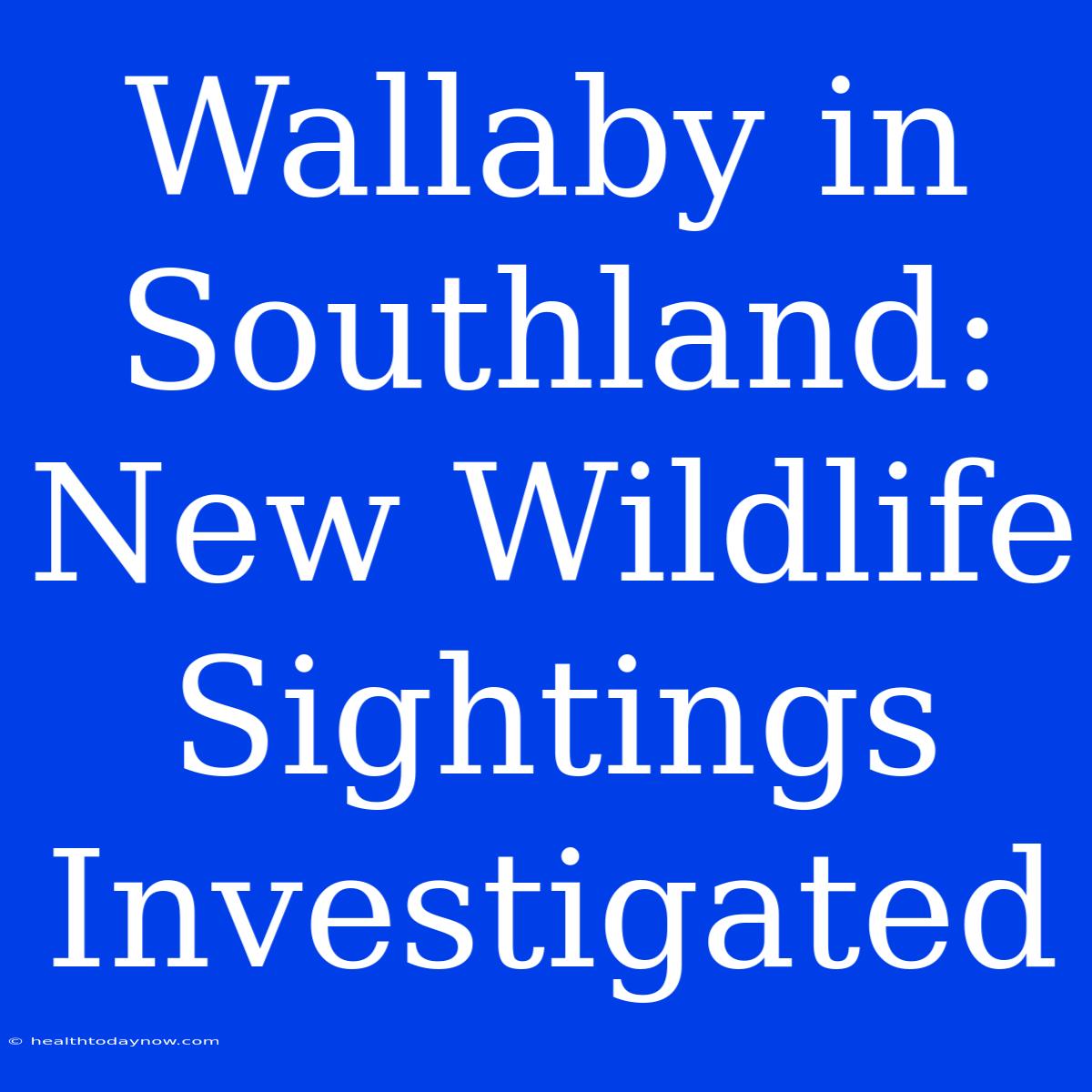Wallaby in Southland: New Wildlife Sightings Investigated
Have you heard about the recent wallaby sightings in Southland? The presence of these exotic marsupials in this region has sparked significant interest and raised concerns about their potential impact on the local ecosystem.
Editor Note: Wallaby sightings in Southland have been reported recently, captivating both the local community and wildlife experts. Understanding the origins and implications of these sightings is crucial for effective conservation efforts.
This article will delve into the recent wallaby sightings in Southland, exploring their potential origins, ecological impact, and management strategies. We'll examine the challenges posed by these introduced species and discuss how authorities are working to address them.
Analysis: To provide a comprehensive insight into the Wallaby sightings in Southland, we've undertaken a thorough analysis. We've gathered information from wildlife experts, conservation organizations, and local media reports. This research has allowed us to identify the key factors surrounding these sightings and their implications for the local environment.
Key takeaways:
| Aspect | Description |
|---|---|
| Species Identification: | The identification of the wallaby species observed is crucial for understanding their potential behavior and management needs. |
| Origin and Introduction: | Investigating the possible origins and pathways of introduction for these wallabies is essential to preventing future occurrences. |
| Ecological Impact: | Assessing the potential impact of these wallabies on the native flora and fauna of Southland is critical for conservation efforts. |
| Management Strategies: | Developing and implementing effective management strategies is crucial to minimize the potential negative effects of these introduced species. |
Wallaby Sightings in Southland
The recent sightings of wallabies in Southland have generated significant interest and concern. These sightings are a reminder of the potential ecological impacts of introduced species. Here are the key aspects of these sightings and their implications:
Species Identification
Determining the exact species of wallaby observed is a crucial first step. This identification will inform subsequent management strategies. Experts are working to analyze available evidence, including photographs and eyewitness accounts, to confirm the species involved. Understanding the wallaby's natural habitat, diet, and reproductive behavior is vital for developing targeted management approaches.
Origin and Introduction
Investigating the origins and pathways of introduction for these wallabies is a key aspect of the investigation. The most likely scenario is that these wallabies escaped from captivity or were intentionally released. However, it's also possible that they migrated from other areas where they are already established. Understanding the source of these wallabies is crucial for preventing future introductions.
Ecological Impact
The potential ecological impact of these wallabies on the Southland environment is a major concern. Wallabies are herbivores and can significantly impact native vegetation. They may compete with native species for food and resources, potentially disrupting delicate ecological balances. Monitoring their impact on the local ecosystem and identifying potential threats to endangered species is critical.
Management Strategies
Developing and implementing effective management strategies is crucial to address the potential negative effects of these wallabies. Options may include trapping, relocation, or targeted control measures. The chosen approach will depend on the species identified, the extent of the population, and the specific ecological context.
Concluding Remarks
The recent wallaby sightings in Southland highlight the ongoing challenge of managing introduced species. Efforts to identify the species, investigate their origins, assess their ecological impact, and implement effective management strategies are crucial to minimize their potential negative effects on the Southland environment. Continued monitoring, collaboration between authorities and researchers, and community awareness are vital for safeguarding the local ecosystem and preserving its unique biodiversity.

